
IUCN Red List India | Red Data List | Red Book Part-3
Subscribe to Never Miss an Important Update! Assured Discounts on New Products!
Must Join PMF IAS Telegram Channel & PMF IAS History Telegram Channel
Last updated on April 25, 2024 6:45 PM
IUCN Red List India (As of March 2019)
‘Critically Endangered’ Birds
The Jerdon’s Courser (Rhinoptilus bitorquatus)
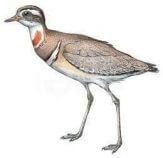
- It is a nocturnal bird found only in the northern part of the state of Andhra Pradesh in peninsular India (Sri Lankamaleswara Wildlife Sanctuary).
- Habitat: Undisturbed scrub jungle with open areas.
- Distribution: Jerdon’s Courser is endemic to Andhra Pradesh.
- Threats: Clearing of scrub jungle, creation of new pastures, growing of dry land crops, Illegal trapping of birds, plantations of exotic trees, quarrying and the construction of the River Canals.
White-bellied Heron (Ardea insignis)
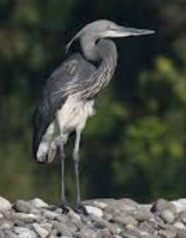
- Distribution: Extremely rare bird found in five or six sites in Assam and Arunachal Pradesh, one or two sites in Bhutan, and a few in Myanmar.
- Habitat: Rivers with sand or gravel bars or inland lakes.
- Threats: Loss and degradation of lowland forests and wetlands through direct exploitation and disturbance by humans.
Bengal Florican (Houbaropsis bengalensis)
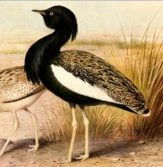
- A rare bustard species that is very well known for its mating dance.
- Habitat: Grasslands occasionally interspersed with scrublands.
- Distribution: Native to only 3 countries in the world – Cambodia, India and Nepal. In India, it occurs in 3 states, namely Uttar Pradesh, Assam and Arunachal Pradesh.
- Threats: Ongoing conversion of the bird’s grassland habitat for various purposes including agriculture is mainly responsible for its population decline.
Himalayan Quail (Ophrysia superciliosa)
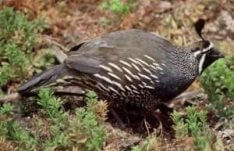
- Habitat: Tall grass and scrub on steep hillsides.
- Distribution: Western Himalayas.
- Threats: Indiscriminate hunting during the colonial period along with habitat modification.
Pink- headed Duck (Rhodonessa caryophyllacea)
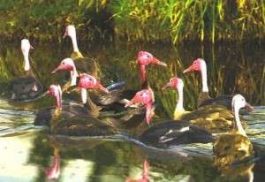
- Males have a deep pink head and neck from which the bird derives its name.
- Habitat: Overgrown still-water pools, marshes and swamps in lowland forests and tall grasslands.
- Distribution: Recorded in India, Bangladesh and Myanmar. Maximum records are from north-east India.
- Threats: Wetland degradation and loss of habitat, along with hunting are the main causes of its decline.
Sociable Lapwing (Vanellus gregarius)
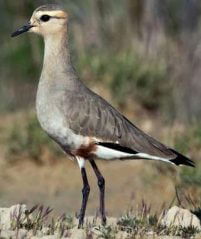
- It is a winter migrant to India.
- Habitat: Fallow fields and scrub desert.
- Distribution: central Asia, Asia Minor, Russia, Egypt, India, Pakistan. In India, habitat is restricted to the north and north-west of the country.
- Threats: Conversion of habitat to arable land, illegal hunting and proximity to human settlements.
Spoon Billed Sandpiper (Eurynorhynchus pygmeus)
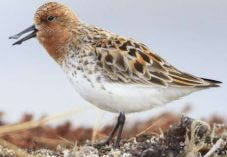
- India is home to some of the last existing wintering grounds of this species.
- Habitat: Coastal areas with sparse vegetation.
- Distribution: Has been recorded along the coastlines of West Bengal, Orissa, Kerala and Tamil Nadu.
- Threats: Habitat degradation and land reclamation. Human disturbance also leads to high incidence of nest desertion.
Siberian Crane (Grus leucogeranus)
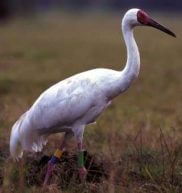
- It is a large, strikingly majestic migratory bird that breeds and winters in wetlands.
- They are known to arrive in winter at Keoladeo National Park, Rajasthan.
- Habitat: Wetland areas.
- Located distribution: Keoladeo National Park in Rajasthan.
- Threats: Pesticide pollution, wetland drainage, development of prime habitat into agricultural fields, and to some extent, hunting.
Endangered Birds
Forest Owlet (Heteroglaux blewitti)
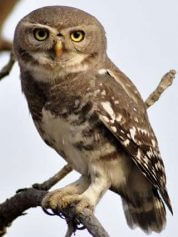
- Moved from Critically Endangered to Endangered.
- Habitat: Dry deciduous forest.
- Habitat: South Madhya Pradesh, in north-west Maharashtra and north-central Maharashtra.
- Threats: Logging operations, burning and cutting of trees damage roosting and nesting trees of the Forest Owlet.
‘Vulnerable’ Birds
Great Indian Hornbill
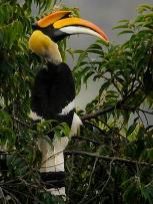
- Habitat: Rainforest regions of India (Western Ghats and North eastern region of India), Southeast Asia.
- Threats: Habitat loss and hunting.
Q. In which of the following regions of India are you most likely to come across the `Great Indian Hornbill’ in its natural habitat? (2016)
- Sand deserts of northwest India
- Higher Himalayas of Jammu and Kashmir
- Salt marshes of western Gujarat
- Western Ghats
Black-Necked Crane (Grus nigricollis)
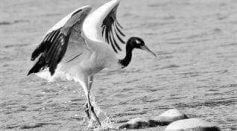
- The threat to the future of a vulnerable bird species has halted the Rs. 6,400-crore hydro power project in Tawang, Arunachal Pradesh.
- The species breeds on the Tibetan plateau and migrates to Tawang for the winter.
- The bird, most commonly found in China, is legally protected in Bhutan and India and is considered sacred to certain Buddhist traditions.
Q. Which one of the following groups of animals belongs to the category of endangered species?
- Great Indian Bustard, Musk Deer, Red Panda and Asiatic Wild Ass
- Kashmir Stag, Cheetal, Blue Bull and Great Indian Bustard
- Snow Leopard, Swamp Deer, Rhesus Monkey and Saras (Crane)
- Lion-tailed Macaque, Blue Bull, Hanuman Langur and Cheetal
Obsolete question. As of 2019, the status of many of these animals has changed.
‘Least Concern’ Birds
The Himalayan bulbul or white-cheeked bulbul (2019)

- Habitat: Himalayan Forests.
‘Critically Endangered’ Reptiles
Gharial (Gavialis gangeticus)
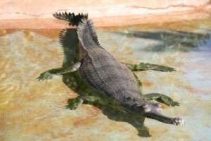
- It is the most uniquely evolved crocodilian in the world, a specialized, river-dwelling, fish-eater.
- Habitat: Clean rivers with sand banks.
- Distribution: Only viable population in the National Chambal Sanctuary, spread across three states of Uttar Pradesh, Rajasthan and Madhya Pradesh in India.
- Small non-breeding populations exist in Son, Gandak, Hoogly and Ghagra rivers. Now extinct in Myanmar, Pakistan, Bhutan and Bangladesh.
- Threats: The combined effects of dams, barrages, artificial embankments, change in river course, pollution, sand-mining, riparian agriculture and ingress of domestic and feral livestock.
Q. If you want to see gharials in their natural habitat, which one of the following is the best place to visit? (2017)
- Bhitarkanika Mangroves
- Chambal River
- Pulicat Lake
- Deepor Beel
Hawksbill Turtle (Eretmochelys imbricata)

- The species is migratory in nature and nesting occurs in about 70 countries across the world.
- Maturation is slow and is estimated between 25 — 40 years.
- Habitat: Nesting occurs on insular, sandy beaches.
- Distribution: In India they are found in the Andaman and Nicobar Islands, the coast of Tamil Nadu and Orissa.
- Threats: Turtle shell trade, egg collection, slaughter for meat, oil pollution and destruction of nesting and foraging habitats.
Four-toed River Terrapin or River Terrapin (Batagur baska)

- Habitat: Freshwater rivers and lakes.
- Distribution: Bangladesh, Cambodia, India, Indonesia and Malaysia.
- Threats: Use of flesh for medicinal purposes, demand for eggs, which are considered a delicacy
Red-crowned Roofed Turtle or the Bengal Roof Turtle (Batagur kachuga)
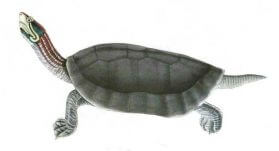
- Habitat: Deep, flowing rivers but with terrestrial nest sites.
- Distribution: Found in India, Bangladesh and Nepal. In India it resides basically in the watershed of the Ganga.
- Threats: Water development projects, water pollution, human disturbance and poaching for the illegal wildlife market.
‘Vulnerable’ Reptiles
Leatherback Turtle (Dermochelys coriacea)
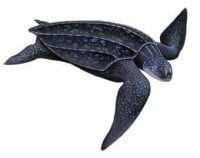
- Moved from Critically Endangered to Vulnerable.
- It is the largest of the living sea turtles, weighing as much as 900 kg.
- Jellyfish is their primary food.
- Habitat: Tropical and subtropical oceans.
- Distribution: Found in tropical and temperate waters of the Atlantic, Pacific, and into Indian Oceans.
- Threats: High sea fishing operations, harvesting of eggs, destruction of nests by wild predators and domesticated species such as cats, dogs and pigs.
- Artificial lighting disorients hatchlings and adults and causes them to migrate inland rather than towards the sea.
- Threats to habitat include construction, mining and plantation of exotics.
Q. Consider the following fauna of India:
- Gharial
- Leatherback turtle
- Swamp deer
Which of the above is/are endangered?
- 1 and 2 only
- 3 only
- 1, 2 and 3
- None
- Gharial are ‘Critically Endangered’. Swamp deer (barasingha) and Leatherback turtle are ‘Vulnerable’.
Answer: d) none
Olive ridley sea turtle

- Also known as the Pacific ridley sea turtle.
- Distribution: found in warm and tropical waters, primarily in the Pacific and Indian Oceans.
- Olive ridley turtles are best known for their behaviour of synchronized nesting in mass numbers.
- In the Indian Ocean, the majority of olive ridleys nest near Gahirmatha in Odisha.
- The coast of Odisha in India is the largest mass nesting site for the olive ridleys.
- Threats: unsustainable egg collection, slaughtering nesting females on the beach, and direct harvesting adults at sea for commercial sale of both the meat and hides.
- Coastal development, natural disasters, climate change, and other sources of beach erosion have also been cited as potential threats to nesting grounds.
What’s the difference between turtles and tortoises?
|
Turtle |
Tortoise |
|
|
|
|
|
|
|
|
| Terrapins are almost a combination of turtles and tortoises. They live in water, mostly small dams or ponds; however they can also live on land. | |
‘Near Threatened’ Reptiles
Sispara day gecko (Cnemaspis sisparensis)
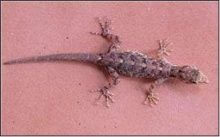
- Distribution: Endemic to Western Ghats, and found in Sispara, Nilgiris, Kavalai near Cochin.
- Threats: Habitat conversion and modification.
‘Critically Endangered’ Fish
The Pondicherry Shark (Carcharhinus hemiodon)
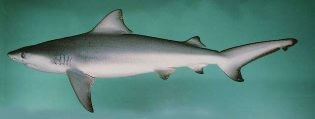
- Distribution: Indian Ocean – from Gulf of Oman to Pakistan, India and Sri Lanka.
- In scattered localities spanning India to New Guinea. Also been recorded at the mouth of the Hooghly river.
- Threats: Large, expanding, and unregulated commercial fisheries in inshore localities and habitats.
The Ganges Shark (Glyphis gangeticus)
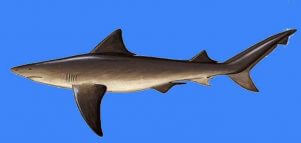
- It occurs in the turbid waters of the Ganga river and the Bay of Bengal.
- The small eyes suggest that it is adapted to living in turbid water (just like dugong), while the slender teeth of the species suggest that it is primarily a fish-eater.
- Distribution: It occurs in India and possibly in Pakistan. The Ganga river system and Hooghly river mouth are its known habitats.
- Threats: Major fisheries targeting sharks. Other probable threats include overfishing, pollution, increasing river use and construction of dams and barrages.
Large-tooth Sawfish (Pristis microdon)
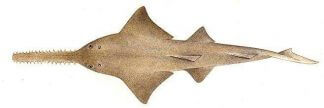
- Distribution: Western part of the Indo-Pacific (East Africa to New Guinea, Philippines and Vietnam to Australia).
- In India, it is known to enter the Mahanadi river, up to 64 km inland, and also is very common in the estuaries of the Ganga and Brahmaputra.
- Threats: The principal threat to all sawfish are fisheries. Their long tooth-studded saw makes them extraordinarily vulnerable to entanglement in any sort of net gear.
- When sawfish are caught in by catch, they often end up being traded because of the very high value of their products (meat is high quality and fins and saws extremely valuable in international trade).
- Major habitat changes include construction of dams over rivers, siltation, pollution from industries and mining operations.
Long-comb Sawfish or Narrow-snout Sawfish (Pristis zijsron)
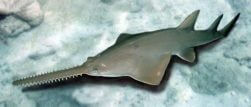
- This species was reported as frequently found in shallow water. It inhabits muddy bottoms and also enters estuaries.
- Distribution: Indo-Pacific region including Australia, Cambodia, China, India, Indonesia and Malaysia.
- Threats: This species has been damaged intensively, both as a target species and as incidental by catch in commercial, sport or shark-control net fisheries, as well as for aquarium display. As a result, it has become severely depleted in recent decades, and now appears to have been extirpated from many parts of its range.
‘Endangered’ Fishes
Knife-tooth Sawfish (Anoxypristis cuspidata)

- Distribution: Widespread in western part of the Indo-Pacific region, including Red Sea.
- Threats: Similar to Long-comb Sawfish.
‘Critically Endangered’ Spiders
Rameshwaram Ornamental or Rameshwaram Parachute Spider (Poecilotheria hanumavilasumica)
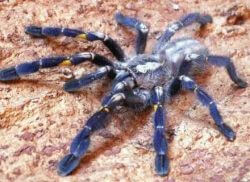
- It was recently described in 2004 and is only found in India.
- The species is semi-social, which means they live partly in groups.
- Habitat: Arboreal (living in trees) and tend to live in hiding.
- Distribution: Endemic to India. Spread along the coastal savannah, tropical lowland rain forests and montane forests up to an altitude of 2000 m above mean sea level.
- Threats: Major threats causing the disappearance of this species is habitat alteration and degradation.
Gooty Tarantula, Metallic Tarantula or Peacock Tarantula (Poecilotheria metallica)
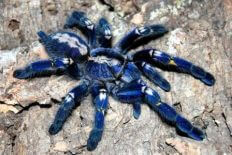
- It was first found in Gooty (Ooty/Udagamandalam).
- Habitat: Wooded mountain area.
- Distribution: Endemic to South India.
- Threats: They are one of the most expensive spiders in the illegal pet trade.
‘Critically Endangered’ Corals
Fire corals (Millepora boschmai)

- They are more closely related to jellyfish than corals.
- Distribution: Indonesia, Gulf of Chiriqui, Panama Pacific Province. Possibly extinct from Australia, India, Indonesia, Malaysia, Panama, Singapore and Thailand.
- Threats: Collected for decoration and jewellery trade. This group is also sensitive to temperature rise and is thought to have completely disappeared from the majority of marine areas possibly because of growing global warming related bleaching effects.
Others
Flying squirrel

- Flying squirrels are mammals too, but they don’t really fly.
- They jump from high in a trees glide through the air like a kite.
- Flying squirrels are a tribe of 44 species of squirrels.
- Their conservation status varies from Near Threatened to Endangered.
- Indian giant flying squirrel is included under ‘Least Concerned’.
Q. Consider the following:
- Black-necked crane
- Cheetah
- Flying squirrel
- Snow leopard
Which of the above are naturally found in India?
- 1, 2 and 3 only
- 1, 3 and 4 only
- 2 and 4 only
- 1, 2, 3 and 4
- Black-necked crane is commonly found in Tibetan and trans-Himalayan region. In winters they migrate to less colder regions of Indian Himalayas.
- Cheetah is an extinct species. They have gone extinct during pre-independence era. Reason: They were hunted down by various Indian kings and British officers.
- Flying Squirrels are found in many Indian forests.
- Snow leopard is an ‘endangered’ specie found in the Himalayan ranges.
Answer: b) 1, 3 and 4 only
Last updated on April 25, 2024 6:45 PM







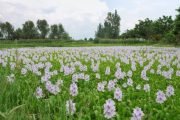
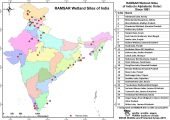


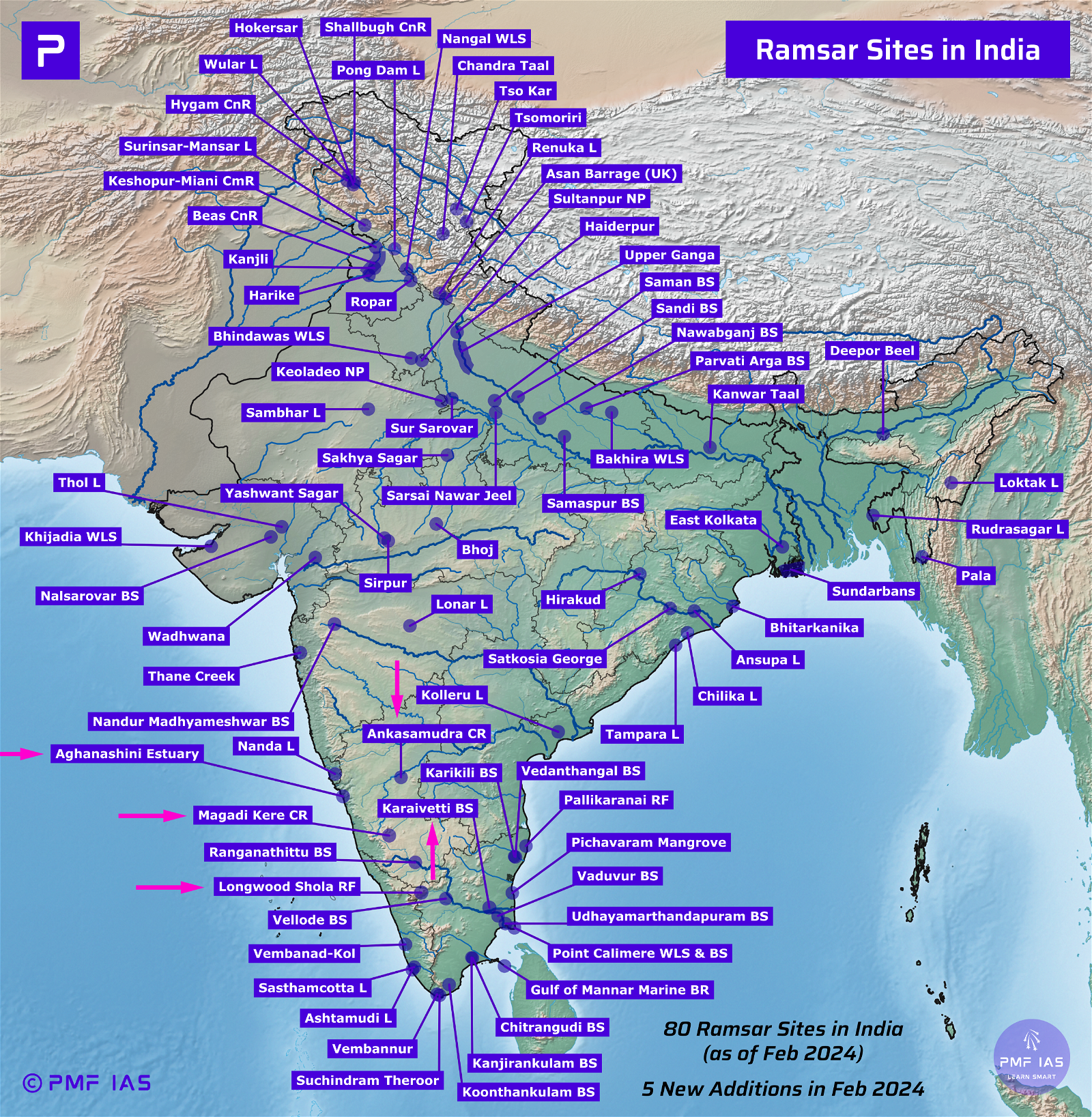
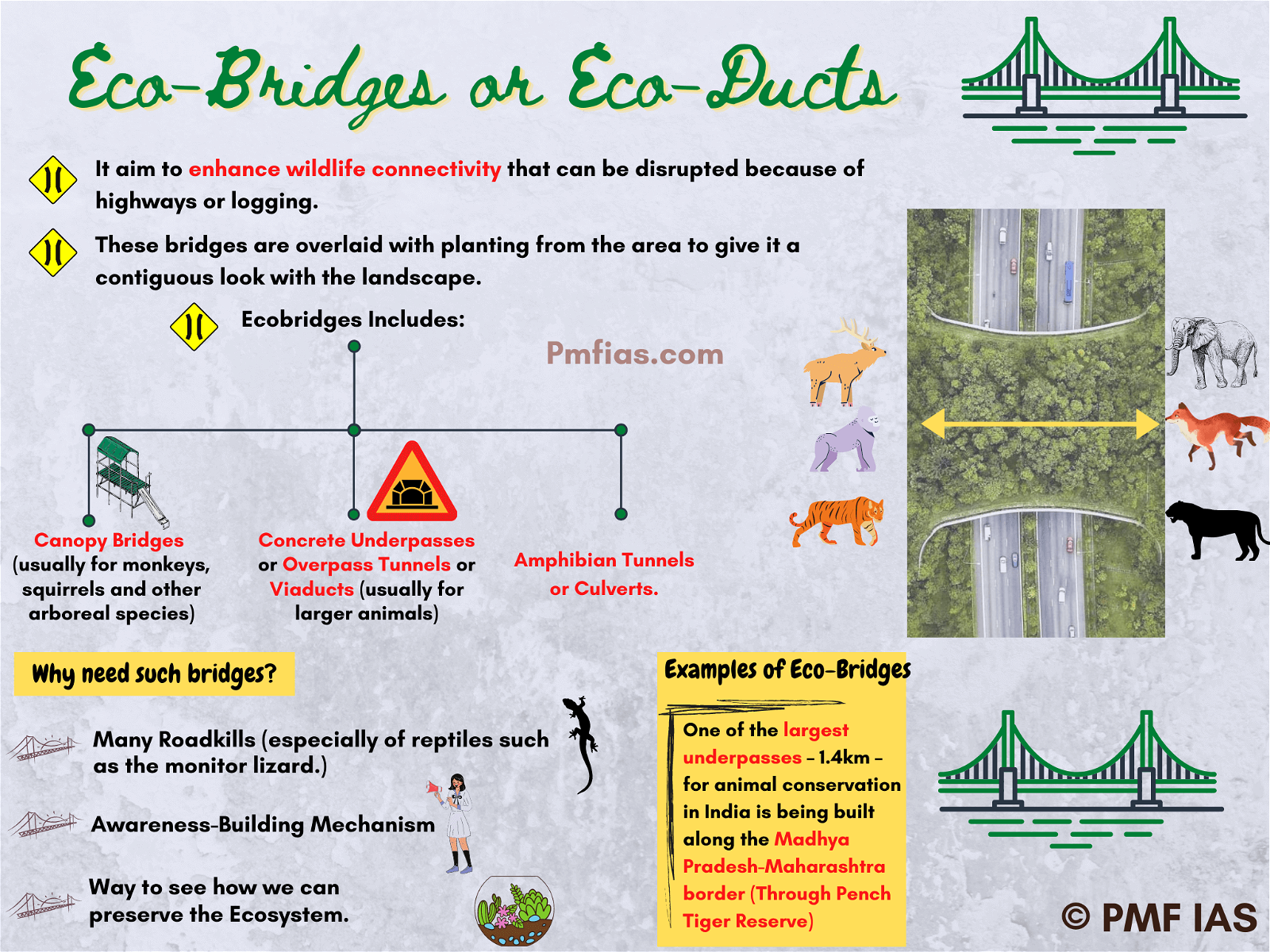
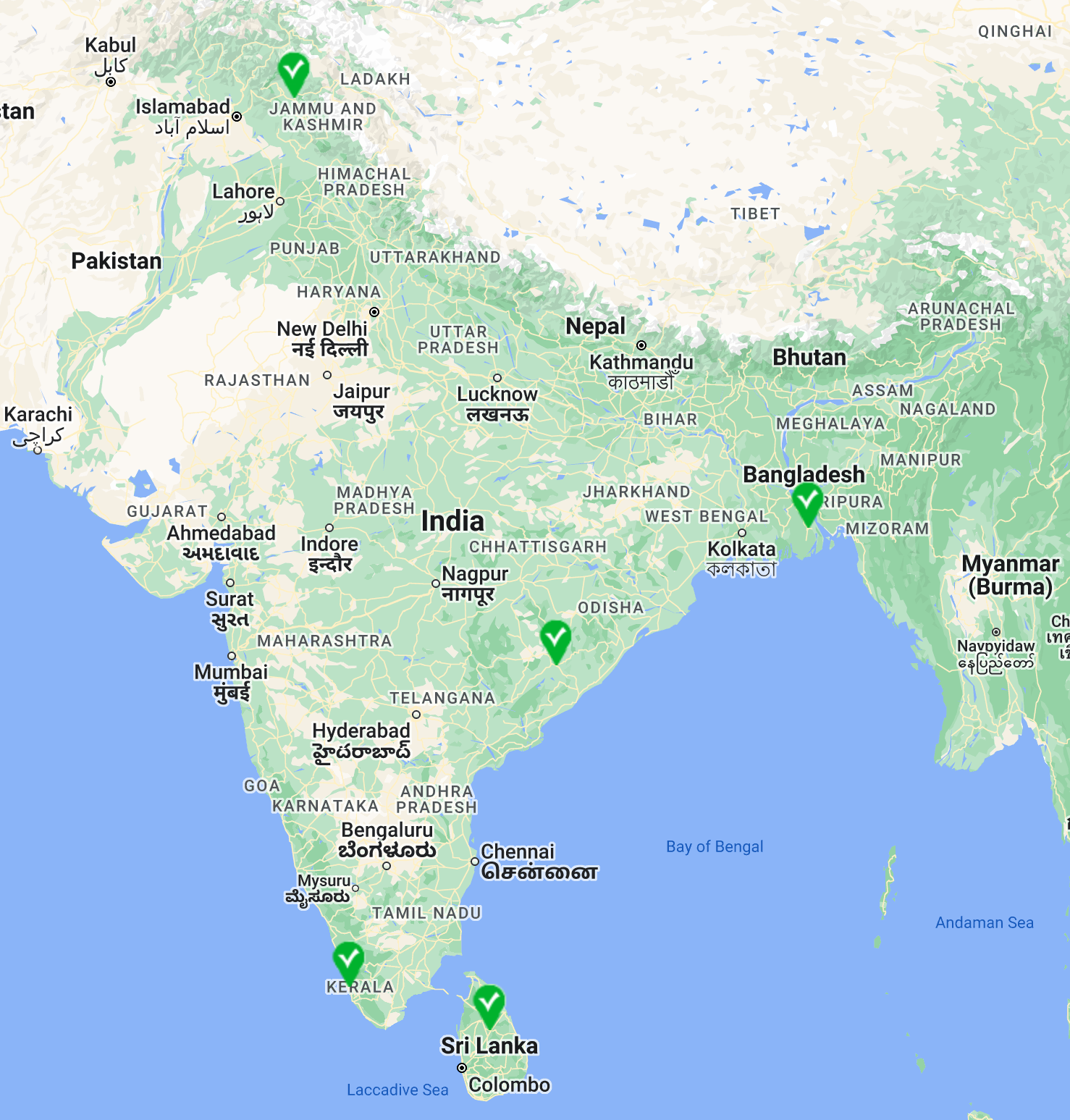




Cheetah not extinct status
Asian cheetah is extinct from India. Government planning for introduction of African cheetah.
sir please update this list as per march 2018